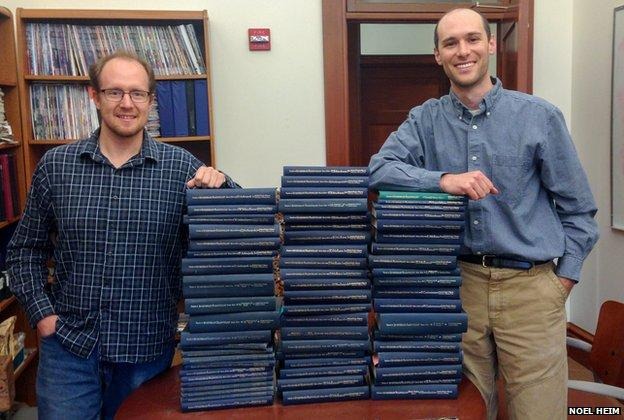Animals Grow As They Evolve: So Says Science
This week a paper has been published in the journal Science which suggests that the mean size of marine mammals has increased 150-fold in the last 542 million years. It's a massive jump, suggests postdoctoral researcher and co-author of this paper, Noel Heim, suggesting that though it may not seem like a lot when seen between one animal and its closest cousin, it's quite significant. This discovery includes word that increase in body size isn't always due to animal lineages growing bigger, but to the diversification of groups of organisms that are larger, and grow larger than their predecessors early in their line's history.
Professor Jonathan Payne, another author on the paper, suggests that "for reasons that we don't completely understand, the classes with large body size appear to be the ones that over time have become differentially more diverse." Big changes, that is to say.
Payne gathered a team of undergraduates and high school interns to compile a dataset including 17,208 genera of marine animals. This group of groups included five major phyla-Arthropods, Brachiopods, Chordates, Echinoderms, and Mollusks.
"Mean biovolume across genera has increased by a factor of 150 since the Cambrian," says the paper's abstract, "whereas minimum biovolume has decreased by less than a factor of 10, and maximum biovolume has increased by more than a factor of 100,000."

ABOVE: Prof. Jonathan Payne (right) and Noel Heim, a postdoctoral researcher in Payne's lab, stand next to stacks of the Treatise on Invertebrate Paleontology, which they recently used to provide fresh evidence of Cope's rule. Credit: Noel Heim
This study aimed to test "Cope's rule". This is a rule formulated in the late 19th century which suggests that the body sizes of terrestrial mammals generally increase over time.
"Our study is the most comprehensive test of Cope's rule ever conducted," said Heim. "Nearly 75 percent of all of marine genera in the fossil record and nearly 60 percent of all the animal genera that ever lived are included in our dataset."
While its not true that all classes/groups of related species moved toward larger sizes over time, it is true that those that were larger became more diverse. The bigger they became, the more they evolved and changed.
The full paper can be found in Science, February 20th, 2015. This would be Vol. 347 no. 6224 pp. 867-870, DOI: 10.1126/science.1260065. "Cope's rule in the evolution of marine animals" by Noel A. Heim, Matthew L. Knope, Ellen K. Schaal1, Steve C. Wang, Jonathan L. Payne.
